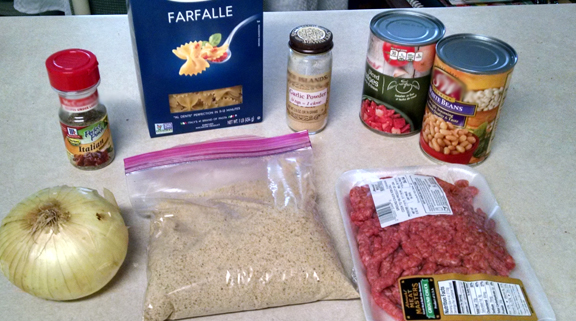Our
meal tonight is a variation on the classic Chicken Cordon Bleu. It is
named in honor of the hard working sex worker rentboys of 1890's in
NYC. Find out more about these nearly forgotten young men making a
living long before World War One!
Chicken
thighs with a wonderful center of pastrami and Havarti cheese. Baked
in a crispy sweet coating and ready to impress all who come to your
table.
Ingredients:
4
boneless skinless chicken thighs
2
cups rice crispies cereal, crushed
1/3
cup honey
Salt
and Pepper to taste
1
Tbs sweet paprika
1
Tbs onion powder
Preheat
the oven to 375
degrees
Lay
out some wax paper on the counter to make clean up easier. Open up
the thighs and spread open on the wax paper.
On
a cutting board, lay out a piece of the pastrami. Cut a piece of
cheese lengthwise and lay on one half edge of the meat. Fold the meat
over. Roll up tightly. This “roll” goes into the thigh just
where the bone was.
Roll
the thigh meat up over and secure with a couple of toothpicks.
Continue until all four are done.
Put
rice cereal in a plastic bag and crush until like bread crumbs then
pour into a bowl. Stir in the salt, pepper, paprika and onion
powder.
Put
honey in a second bowl and heat in microwave for about 15 – 20
sec. Just to make it flow easily.
With
a pastry brush, brush the honey all over the rolled up thigh and
press it into the rice crumbs.
Line
a baking pan with parchment paper and arrange the thighs on that.
Roast
for about
45 minutes
or until golden brown and internal temperature reaches 155
degrees.
Remove
from oven and let rest for 5
minutes
then transfer to a serving platter with a spatula.
Here
these thighs are served with a steamed broccoli and a dish of diced
pears. Any green vegetable will work.
For
our music: https://www.youtube.com/watch?v=h1rH_iaZkv0
Honored
to be serving my Master Indy
socialslave
To
satisfy and restore.
To
nourish, support and maintain.
To
gratify, spoil, comfort and please,
to
nurture, assist, and sustain
…..I
cook!
Please
buy slave's cookbook:
The
Little Black Book of Indiscreet Recipes
by
Dan White
http://www.amazon.com/dp/B00F315Y4I/ref=cm_sw_r_tw_dp_vAT4sb0934RTM
via @amazon
===========================
The
OTHER Bowery Boys
“Paresis Hall”, was located in the Bowery on 5th Street near Cooper Union Run by ‘Biff’ Ellison, a gangster affiliated with the Five Points Gang. No attempt to disguise it as anything other than a ‘fairy resort”. A gay brothel.
Much
like gay bars of the 1950’s, 60’s, and 70’s, it functioned as
a social center, providing a sense of community and support. Many
working class men and youths in the tenement districts met in such
places. They held unsupervised gatherings, created informal social
clubs, and even sponsored larger dances or balls.
A
few men of the Paresis Hall men organized a club called the Cercle
Hermaphroditis, which permanently rented a room above the bar.
Dressing in women’s attire on the streets dangerous. Paresis Hall
gave them a space where they could gather without fear, and even
store some of their personal things in a place more private than
their living areas.
The
existence of Paresis Hall and its pictures offer quite an insight for
the historian into gay life nearly 140 years ago.
It
contained young hustlers from ages 14 to 21 years old. The boys
often would dress up in a feminine manner including makeup and they
would take their tricks to the upper floors or to the basement to
conduct their business transactions.
During the 1890′s the area around fourteenth street was an early
“Tenderloin” section to the theater district a few blocks away. The area
boasted no fewer than six other “Resorts”. Paresis Hall being the
busiest, Little Bucks, Manilla Hall, The Slide and the Sharon Hotel (Cock Sucker’s Hall) just to name a few.
During the 1890′s the area around fourteenth street was an early
“Tenderloin” section to the theater district a few blocks away. The area
boasted no fewer than six other “Resorts”. Paresis Hall being the
busiest, Little Bucks, Manilla Hall, The Slide and the Sharon Hotel (Cock Sucker’s Hall) just to name a few.
Photo
of the boys masquerading as working boys of another kind.
Photographs
were required to be taken of the sex worker at several local "Cabinet
Studios" - these taken to remind the client of the worker and to
urge a return visit. They were given to the man if his
spending habits warranted. if not the pictures were made available
for purchase.
On
the back was this personal information: names, sexual preferences and
sizes (I don't mean shoe size.)
Johny was one of the most popular boys at both of the clubs, given the fact of some unique "Anotomical Gifts".
One
the back of the card is the following information in faded pencil:
"Little"
Johny Mueller * 13 Inch & Huge Sac * Very Popular Boy * P.H. &
L.B. * 1891 Jacob Miller
----------------------
About the name:
The official name of the establishment was Columbia Hall.“Paresis” was a partial or incomplete paralysis.
It
was disease of the brain, marked by progressive dementia, tremor,
speech disturbances, and increasing muscular weakness.
Young
boys were told you would acquire it by associating with fairies or,
heaven forbid, having male to male sex!
With a typical sense of queer humor, this brothel became known as “Paresis Hall”.
The
building is now the home of the Village Voice newspaper.
How
appropriate.
-------------













































